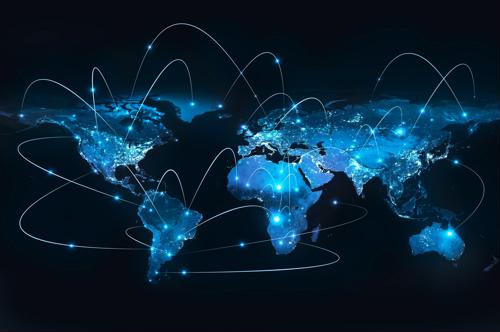
1G, 2G, 3G, 4G and 5G — What's the difference?
By Max BurkhalterFebruary 12, 2021
Every advancement in technology is called a new generation, and data network capability or performance is no exception. But what's the difference between 1G, 2G, 3G, 4G and 5G in terms of network connectivity?
The original connectivity for mobile phones was analog, and only had a speed of 2.4 Kbps. Analog wasn't referred to as 1G until the first iteration of digital connectivity came along, which was promptly named 2G, making the moniker retroactive. 2G bumped speeds up to 0.1 Mbps, and allowed multiple users on a single, secure channel.
The real game-changer came with the advent of 3G, which took mobile networks and data use to a new level. Speeds jumped to 2 Mbps, and the 3G network expanded with towers capable of servicing 60 to 100 people at a time with no degradation in service.
These first three levels of connectivity required new hardware every time an advance was made. By the time 3G came along, the smartphone was hitting its stride. Connectivity meant that applications designed to run on the internet were being developed right and left, and phones became mini-computers that could be carried anywhere.

Backward compatibility
The 4G generation prompted production of the first phones with backwards compatibility. Consumers wanted the latest tech, but 4G was taking time to roll out. Towers could service 300 to 400 people as engineers figured out how to maximize data packaging for transmission along available bandwidth. 4G allowed speeds of 3 to 5 Mbps, bringing cellphones into line with the highest speeds then available using DSL on home computers.
5G delivered another massive, exponential spike in speed and connectivity. It provides higher download speeds that blow previous generations out of the water (up to 20,480 Mbps), higher capacity (the capability to support hundreds of users at a time, and higher data rates to support video playback or conferencing. All this and thousands of devices in the Internet of Things (IoT) as well.
The secret to these leaps is spectral efficiency. Each subsequent generation is able to deliver more data per hertz than the generation before; for example, 3G only worked for up to 2.1 Gigahertz and 4G was only marginally better, and 2.5 Gigahertz. 5G can reach 95 Gigahertz, making the latest generation a true game-changer.
What's next?
According to GovTech, the U.S. and China are both hurtling toward the development of 6G, which could be up to 100 times faster than 5G. China has already launched a "6G" satellite, according to Popular Mechanics, which notes that 6G hasn't yet been specifically defined but that the satellite works on the basis of terahertz communication.
Meanwhile, connectivity on 4G and 5G networks has expanded to home and business computer use, delivering fast, efficient and cost-effective connections through wireless modems and routers rather than requiring a wired connection. With a distributed workforce and the face of the office changing hard-wired solutions.
Due to the Covid-19 pandemic, it can be expected the individual and commercial need to stay online will remain a significant driver in the search for ever more powerful and speedy network connections. Perle provides support for internet connectivity with industrial-grade solutions. Find out what our satisfied customers are saying today.



